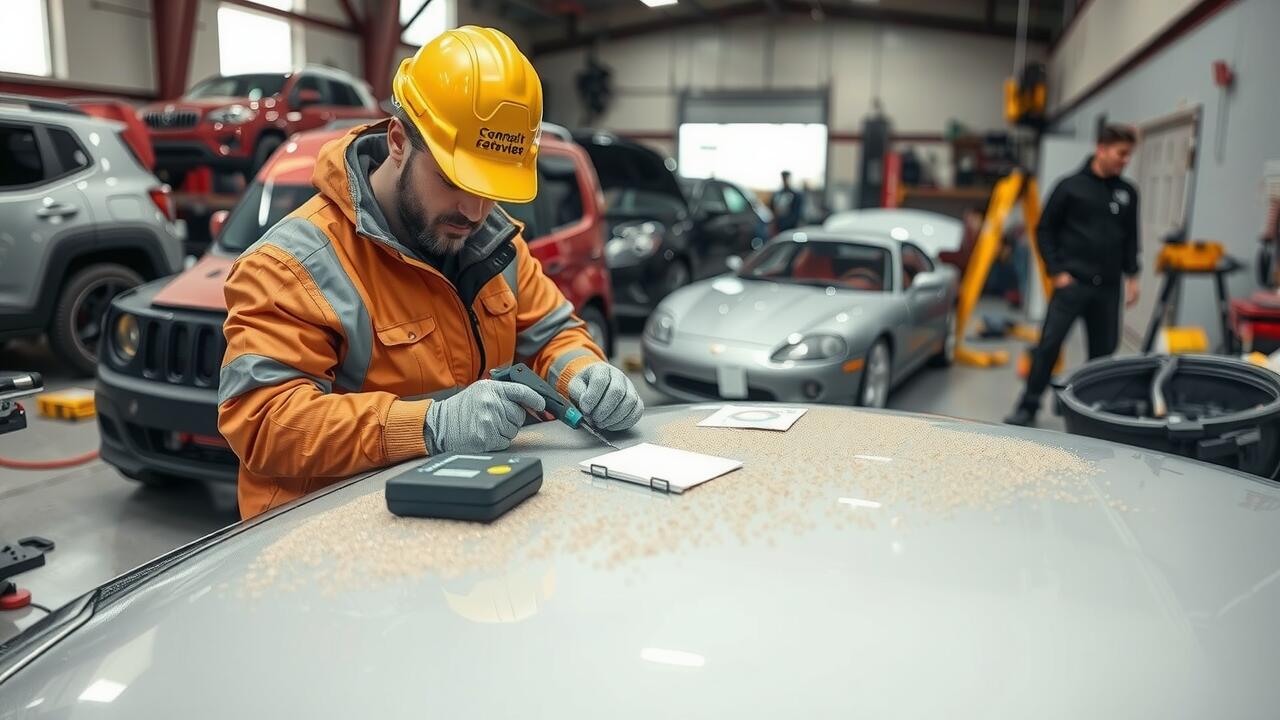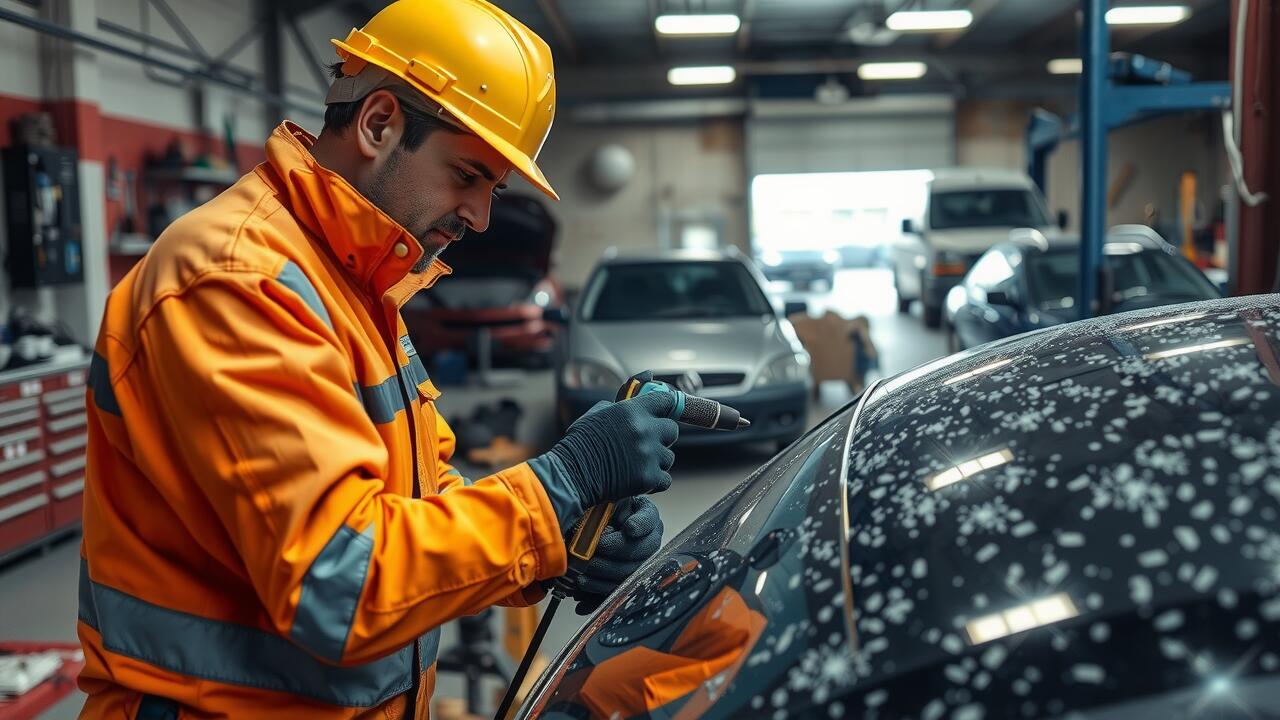
Insurance Claims for Hail Damage
When dealing with hail damage, understanding your insurance coverage is crucial. Many policies include provisions for roof repairs resulting from severe weather events. It is important to review your specific policy details, noting any limits or exclusions related to hail damage. In most cases, the first step in filing a claim is documenting the damage thoroughly, which may involve taking photographs and making a detailed list of affected areas. This documentation will serve as evidence to support your claim.
Once you submit your claim for hail damage repair, your insurance company will typically send an adjuster to evaluate the situation. The adjuster will assess the extent of the damage and verify whether it falls within the coverage limits of your policy. Keeping communication open with your insurance provider is essential throughout this process. Understanding the specific requirements and potential timelines can help ease any concerns while you navigate the claims process.
Navigating the Claims Process
Navigating the claims process after experiencing hail damage can feel overwhelming, but understanding the steps involved can simplify the journey. Start by thoroughly documenting the damage with photographs and a detailed description of what occurred. This evidence will be crucial when you file your claim. Check your insurance policy to understand the coverage specifics related to hail damage repair. Knowing your policy limits and deductibles can help you prepare for potential out-of-pocket costs.
Once you've gathered your evidence, contact your insurance company to initiate your claim. Be ready to provide all necessary documentation and answer any questions they may have. An adjuster will likely be sent to assess the damage. It is important to be present during this evaluation to point out specific areas of concern. After the adjuster completes their assessment, you will receive an estimate for the hail damage repair, which will form the basis of your claim settlement.
Choosing the Right Roofing Material
Selecting the right roofing material is essential, especially when considering hail damage repair. Different materials offer varying levels of durability, impact resistance, and longevity. Asphalt shingles, for instance, are widely used due to their affordability and effectiveness. However, metal roofs provide superior resistance to hail and extreme weather conditions, making them an appealing choice for homeowners in hail-prone areas.
Additionally, slate and tile roofs are known for their long lifespan and aesthetic appeal. While these materials can be more expensive initially, their resilience might save homeowners from frequent repairs or replacements in the long run. During the hail damage repair process, evaluating the climate and potential weather conditions in your region can help inform a more suitable choice for roofing materials.
Options for Durable Roofs
When considering options for durable roofs, it’s important to prioritize materials known for their resilience. Metal roofing stands out as a robust choice. It can withstand severe weather conditions, including hail, and is resistant to corrosion. Another option is impact-resistant shingles, specifically designed to absorb the energy from hail impacts. This type of roofing material can significantly reduce the likelihood of needing extensive hail damage repair, which can save homeowners both time and money in the long run.
Clay and concrete tiles also provide durability against hail damage. These materials are not only aesthetically pleasing but can last for decades with minimal maintenance. While the initial investment may be higher, the long lifespan often justifies the cost. Homeowners should assess their local climate and different roofing options to select the most suitable material for their needs. It is essential to choose a roofing material that will provide peace of mind during storm season while minimizing potential hail damage repair.
Hiring a Professional Roofer
When it comes to hiring a professional roofer for hail damage repair, it’s essential to find someone with experience and a solid reputation. Look for contractors who specialize in storm damage and have a track record of successful repairs. Reading customer reviews and asking for references can provide insight into their reliability and quality of work. A well-established roofer should also be familiar with the insurance process, which can ease the burden during such a stressful time.
In addition to expertise, ensure that the contractor is licensed and insured. This protects both you and the contractor in case of any accidents that may occur during the repair process. Obtain multiple estimates to compare not only pricing but also the scope of work each contractor proposes. Choosing a skilled roofer will not only help restore your roof but also contribute to the overall safety and longevity of your home following hail damage repair.
What to Look for in a Contractor
When searching for a contractor for hail damage repair, consider their experience and reputation within the local community. Look for professionals who specialize in roofing and have a proven track record with similar repairs. Positive client testimonials and reviews can provide insights into their reliability and workmanship. Additionally, check if they have the necessary licenses and insurance to perform work in your area.
Communication is also key when selecting a contractor for hail damage repair. Ensure that they are responsive to your inquiries and can clearly explain the process involved in repairing or replacing your roof. A reliable contractor will provide a detailed estimate and timeline, as well as address any questions you might have regarding the materials or techniques they intend to use. This transparency helps build trust and ensures you know what to expect throughout the project.
FAQS
How can I tell if my roof has hail damage?
You can look for visible signs such as dents in the roofing material, missing shingles, or granule loss. It's also a good idea to have a professional inspection to assess the extent of the damage.
Will my homeowner's insurance cover hail damage to my roof?
Most homeowner's insurance policies do cover hail damage, but coverage can vary. It's essential to review your policy and contact your insurance provider for specific details.
How do I file an insurance claim for hail damage?
Start by documenting the damage with photos, then contact your insurance company to report the claim. They will guide you through the claims process, which often includes an inspection by an adjuster.
What roofing materials are best for areas prone to hail storms?
Durable roofing materials like impact-resistant shingles, metal roofing, or tile are advisable for hail-prone areas, as they can better withstand severe weather.
What should I look for when hiring a roofing contractor?
When hiring a contractor, consider their experience, licensing, insurance, reputation, and customer reviews. It's also important to get multiple quotes and ensure they are familiar with working with insurance claims.

